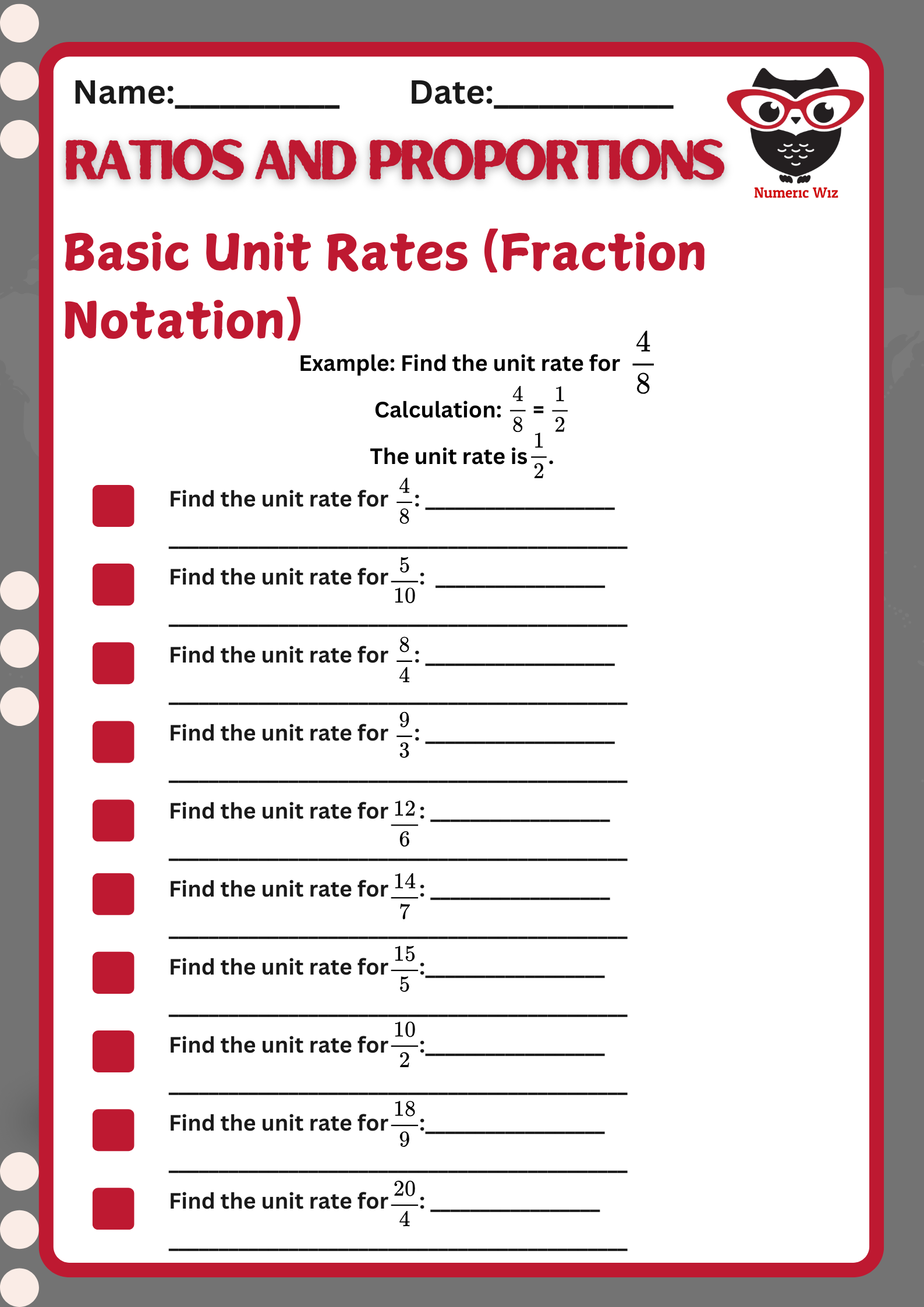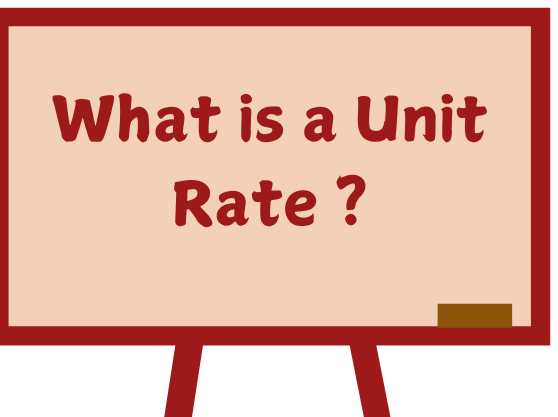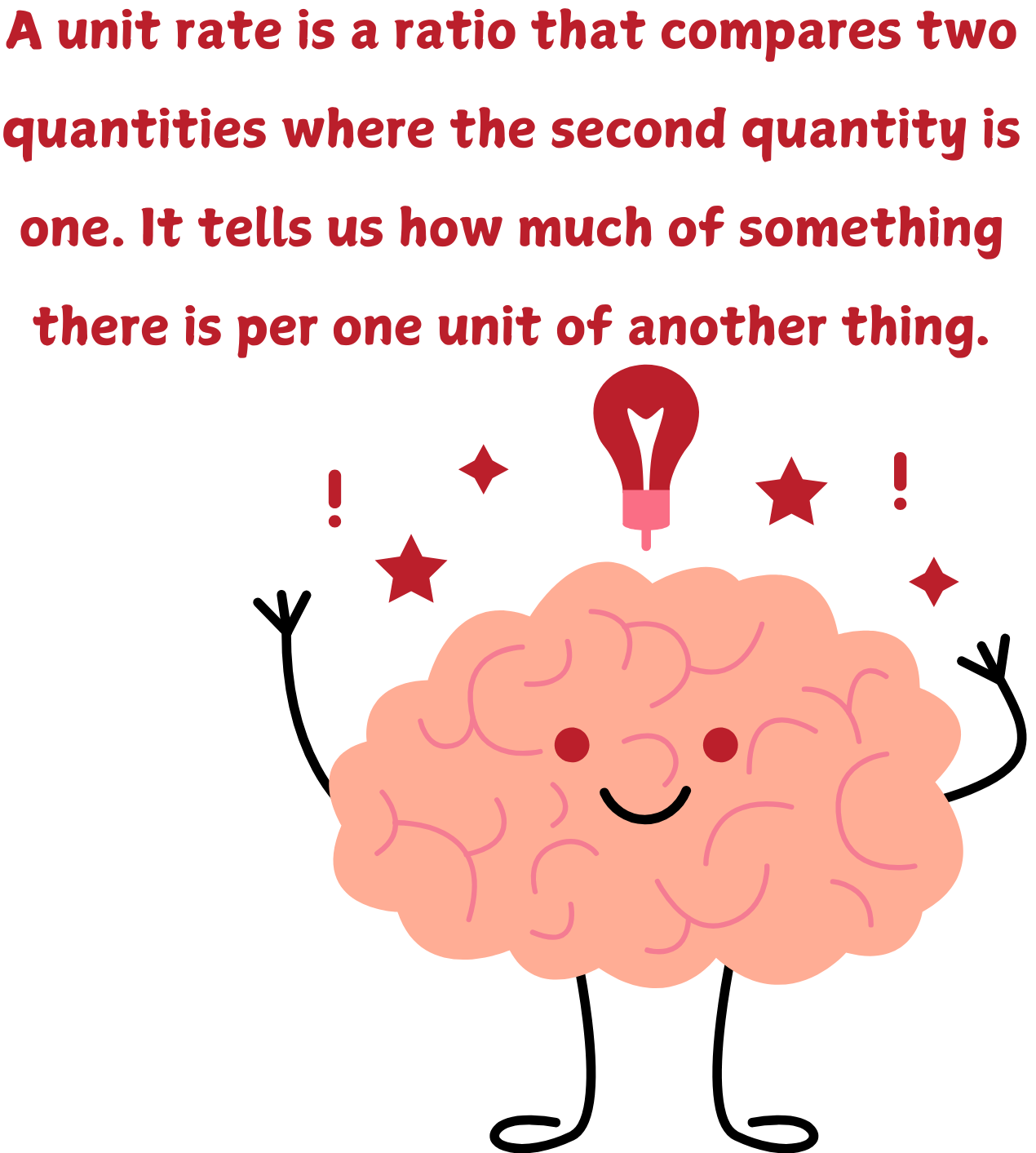
Unit rates help us understand how one quantity relates to one unit of another. This concept is commonly used in everyday situations, such as determining speed, cost per item, or measurement conversions. When dealing with fractions, unit rates are calculated by dividing one fraction by another, which helps simplify complex comparisons.
For instance, if a person jogs 3/4 of a mile in 1/2 an hour, we can determine their speed per hour by calculating:
3/4 ÷ 1/2 = 3/4 × 2 = 3/2 miles per hour
This tells us that the jogger moves at 3/2 = 1.5 miles per hour.


Unit rates provide a way to compare different rates or prices, making it easier to make decisions in real life. Whether you’re comparing grocery prices, analyzing speed, or working with construction materials, unit rates simplify complex relationships.
For example, when shopping, you might find two different brands of rice:
Brand A: 3/5 pounds for $4/3
Brand B: 1/2 pound for $5/4
To determine the better deal, we compute the price per pound for each:
Brand A: 4/3 ÷ 3/5 =4/3 ×5/3 = 20/9 dollars per pound
Brand B:5/4 ÷ 1/2 =5/4 × 2 = 10/4 = 5/2 dollars per pound
Since 20/9 ≈ 2.22 and 5/2 = 2.5, Brand A is the better deal because it costs less per pound.
 How to Calculate Unit Rates with Fractions
How to Calculate Unit Rates with Fractions
To determine a unit rate when given fractions:
![]() Set up the ratio as a fraction (e.g., price per pound, distance per hour).
Set up the ratio as a fraction (e.g., price per pound, distance per hour).
![]() Divide the given fractions by multiplying the first fraction by the reciprocal of the second.
Divide the given fractions by multiplying the first fraction by the reciprocal of the second.
![]() Simplify the fraction if necessary.
Simplify the fraction if necessary.
 For example, to find the unit rate for 3/4 cup per 2/3 batch, divide:
For example, to find the unit rate for 3/4 cup per 2/3 batch, divide:
3/4 ÷ 2/3 = 3/4 × 3/2 = 9/8
So, for one full batch, you need 9/8 cups of the ingredient.
Let’s practice and evaluate your work together by turning word problems into numerical expressions!
For a limited time
